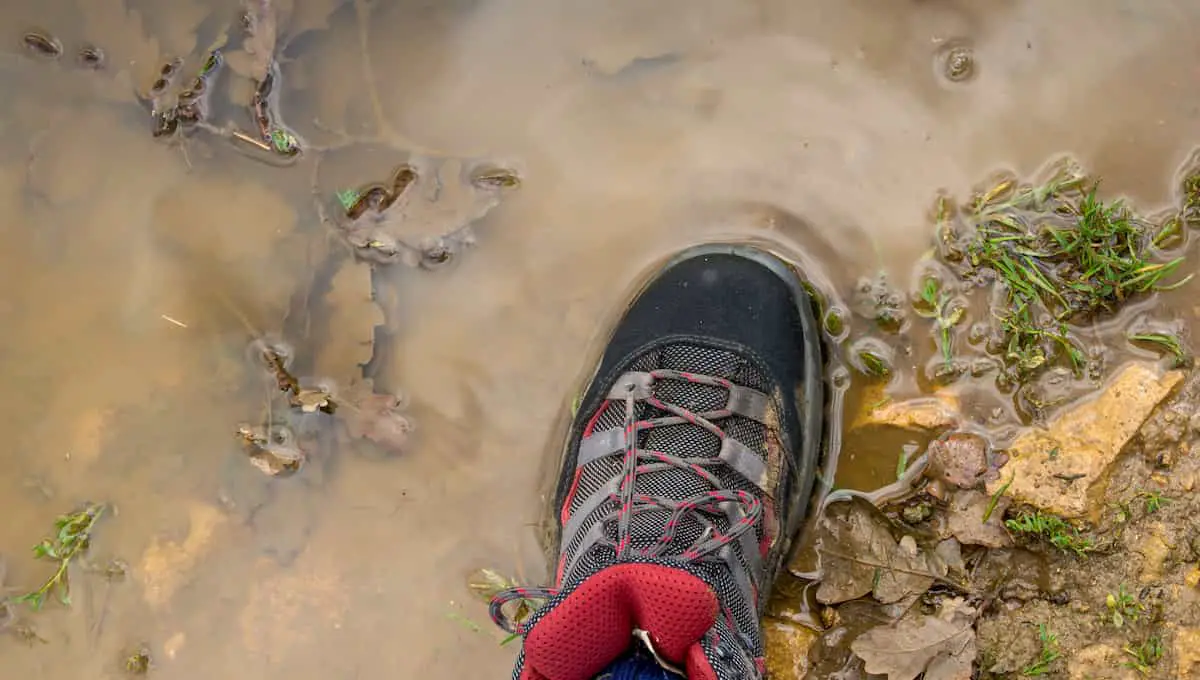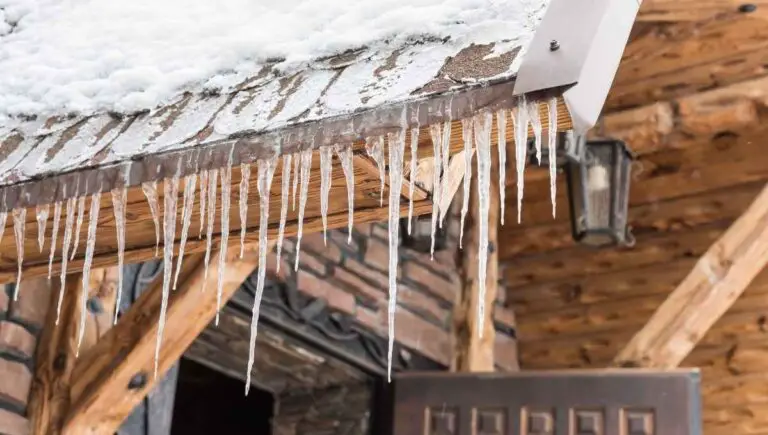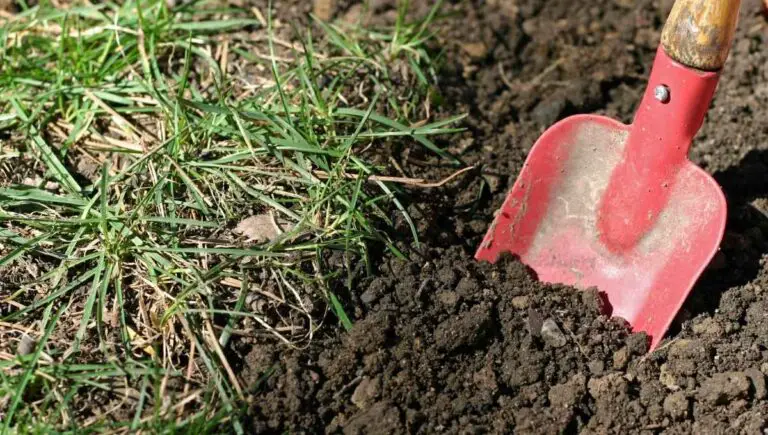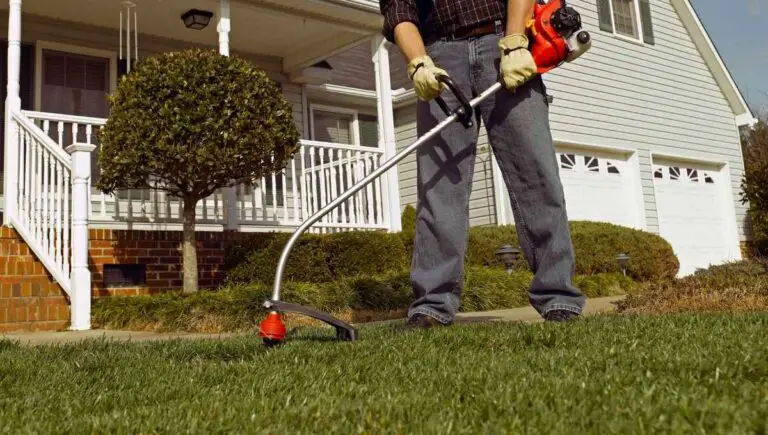How To Fix A Muddy Driveway Fast and Easy

Puddles of mud after a rainstorm might not seem like a big deal, but when they start accumulating, they become hazardous for several reasons. Learn how to fix a muddy driveway, so that you can say goodbye to mud being tracked through your home, as well as never being stuck in the mud on your way to work again.
In this article, we’ll look at why you have water pooling in your drive while providing you with efficient solutions on how to fix gravel or muddy grass driveway inexpensively. Additionally, we’ll offer information on how to prevent water from collecting by stabilizing a muddy road permanently.
Why is There So Much Mud in My Driveway?
After heavy rainfall, you may notice that water puddles in specific areas of your driveway. If you’ve checked out our post on fixing muddy backyard dog trails, you know how much of a pain it can be when mud gets tracked everywhere.
The cause of this may be due to low areas that need elevating. Fill these with an aggregate, such as small stones like compacted crusher run. The task, while mundane and time-consuming, is a relatively easy home improvement project to perform.
If you’ve noticed that your driveway is always underwater, you may have a drainage issue on your hands. Waterlogging occurs when excess water can’t run off, and so it sits in your driveway, causing a muddy mess.
How Do I Get Rid of Puddles in My Driveway?
You could prevent flooding by improving upon the water drainage in your driveway. This can be done by digging out trenches in your front yard for the water to escape, or by installing a culvert that redirects the unwanted water somewhere else. We’ll take a look at both methods in detail later on.
What is a Quick Fix for My Muddy Driveway?
If you’re reading this, it’s likely that you urgently need to remove mud and muck build-up that’s not just inconvenient, but is ruining your home and yard in general.
How to Fix a Mud Hole in the Driveway
One way to fix mud holes in the driveway is by filling it with small, crushed stone. Adding sand won’t work and will likely worsen your sticky situation.
The technique you use to lay down the stone is vital as improper layering could result in the formation of water pockets trapped below the ground, which could cause potholes in the long run.
Make sure to tightly pack the stones together, so that only trickles of water can seep through. If you already have stone paving your driveway, pick one up and take a closer look.
Is it a smooth pebble, or does it have an angular shape? If it’s the former, you may need to regrade the entire area because rocks with rounded surfaces let more water in.
Add Gravel To Firm Up a Muddy Driveway
One might wonder, how do I stop my driveway from flooding? This is a concern that many people grapple with everyday. Some homeowners use gravel which can be an effective albeit temporary solution.
However, reading online about searches related to “quick fix for my muddy driveway” will show you that this method of restoration has received a mixed bag of reviews.
If you plan to fill potholes and ruts with gravel, it’s important to note that the aggregate may wash away and become displaced the next time it rains. To mitigate the displacement of gravel during heavy flooding, you should compact the gravel.
Put simply, well-compacted gravel should group together well to form a durable surface, which you can do using a plate compactor.
What Is The Best Type Of Gravel To Use For A Driveway?
If you plan to lay down gravel on your driveway, bluestone gravel is a good choice. This type of landscape gravel is aesthetically pleasing and highly efficient for the short-term.
Please note that unless you keep up the maintenance by consistently adding new gravel, you may need to find a more permanent fix or long-term solution.
Don’t Use Plywood For A Muddy Driveway
People wanting to go greener may advocate wood driveways, particularly wood chips, which is beneficial for the soil.
However, using wood in bad weather is problematic because it may rot. Additionally, wood doesn’t provide sufficient traction for your car to move forward.
Product Picks
- Purchase 20 to 2000 pounds worth of Southwest Boulder & Stone Landscape Gravel (available in a variety of colors).
- Compact your gravel with the Stark 2.0HP Gas Vibration Compaction Force Construction Plate Compactor.
Lime On Muddy Driveways
Does lime dry up mud? Yes, lime is an inorganic material that absorbs wetness in the soil. Quicklime and hydrated lime are both effective for drying soil quickly. Both are inexpensive and can be bought at home depot stores in various forms – pebbles, ground or granular.
How Do You Harden a Dirt Driveway?
Are you looking for low-costing techniques on how to harden a driveway? A basic mixture can be concocted, combining lime with dirt and sand. Hardened soil makes stagnant water collecting in your driveway less of an issue due to the aforementioned drying qualities of lime.
Product Picks
- Multi-Purpose Hydrated Lime available here and Quicklime (powder) available here.
Cat Litter For Muddy Driveways

Cat litter is more than a toilet for your feline. It’s another cheap drying agent that you can cover muddy areas of your driveway with.
Sprinkle the granules over the affected area and leave it overnight to soak up the moisture. We recommend that you use a litter that clumps to ensure an easier cleanup.
As a rule, make sure that you use clean litter because the scent of dirty litter could attract stray tom cats to your yard.
How To Keep My Driveway From Washing Out (Permanent Solutions)
Fix An Improper Gravel Base
An issue that numerous homeowners face is an improper gravel base, which can have far-reaching consequences if it’s not repaired before bad weather hits.
A drive with a sub-par gravel base becomes soft over time, leading to ruts developing and your driveway being unstable and full of pot-holes where water can collect. When it rains, these areas wash out completely.
How to Fix a Soft Driveway?
Under these circumstances, adding gravel to the top layer does little because the issue runs deeper underground. As a result, you may need to regrade your driveway.
The task can be done using various instruments, such as using a box blade attached to a tractor. A box blade can evenly spread gravel or soil, to level expansive areas of land.
How to Fix Muddy Ruts
How else do you fix muddy ruts if you don’t have these high-tech tools and have smaller ground to cover? You can excavate, smooth, and fill muddy holes with a shovel and rake.
Product Picks
- Buy this popular Scrape Blade Implement for a big plot of land
- This premium-grade Bully Tools Round Point Shovel with Fiberglass D-Grip Handle and 63 Inch Adjustable Rake.
Create Outlets For Your Water To Escape
As we have previously mentioned, rainwater cannot run off from a swampy driveway, resulting in the situation getting worse as the soil can’t absorb the moisture quickly enough. Therefore, it may be a good idea to create or install a water outlet.
Culverts
Culverts are pipes that are placed underneath the soil to keep the flow of water moving. You can install these pipes or tunnels by yourself, but the process can be complicated if you aren’t an amateur handyman of sorts.
For this task, you will need high-grade equipment and must be knowledgeable about the task you’re about to endeavour. This will require you to know the location of underground utility lines and other crucial information.
If it’s installed correctly, the newly-installed culvert will see an end to your frustrating mud problem permanently.
If you already have a culvert installed, the cause of your underwater driveway may be the result of the pipe clogged with debris. Remove this material, and your drainage should improve considerably.
Product Picks
- If you’re interested in learning more about culverts and drainage in general, you should definitely check out Driveways, Paths and Patios by Tony McCormack.
Dig Trenches And Ditches
Are you looking for a simple method for eradicating excess water? You can dig a trench away from your driveway to prevent a swampy driveway from occurring. A trench, which is a narrow channel that extends the length of your driveway, helps water to escape.
How to Fix a Steep Muddy Driveway
We’ve looked at employing fixes for standard driveways, but how do you fix a steep, muddy driveway? If it’s situated on the top of a hill, digging a ditch to catch water that runs downwards assists with drainage.
Adding heavy rocks to the bottom of your dug-out hole will act as an additional barrier that slows down fast-flowing water.
As ditches are usually shallow, it’s essential to keep watch over them during heavy rainfall. Failure to do so might result in soil erosion.
Are There Measures You Can Take to Prevent Flooding?
Using Geotextile
How do you fix mud holes in driveways for the long-term or prevent them from occurring in the first place? Most professional contractors swear by geotextile.
If you’re looking to avoid muddy patches forming, roll geotextile over your driveway before laying down your gravel. Doing so will prevent the gravel mixing with soil, thus putting a stop to muddy driveways.
Geotextile is effective because they’re increasingly resistant to localized flooding. The reason for this is because it comprises permeable materials, which not only help with water drainage but also contribute to improving the condition of the soil.
Product Picks
- Secure your gravel driveway with ArmorLay Commercial Grade Driveway
Driveway Crowning
A driveway that’s crowned is crucial because it allows surface water to drain from the surface.
Essentially, the part which crowns is effectively is the highest point of your driveway, running lengthwise across the center of your road. The edges slope downwards, allowing water to flow off the road and into the surrounding vegetation or nearby ditches.
The rule of thumb for crowned driveways is that the more sloped the road is, the quicker the water is shed, which minimizes the risk of potential flooding.
Constant Maintenance
Maintenance is essential, especially if you have a gravel driveway. Before and during bad weather, you should start plowing, raking out problem areas, and dethawing your driveway as a precaution to prevent a muddy situation from occurring.
Over time, your gravel will become stronger and more resistant to ruts, mud puddles, and the like.
It’s also important to note that damage to the surface of your driveway could result in the water collecting in cracks and fissures if you aren’t careful. Therefore, you should fix small issues before they become bigger ones that are more expensive to repair.
Should I Use Asphalt Over Gravel to Cover My Driveway?
Are you tired of annually regrading and scarifying your gravel or dirt driveway after it gets washed away? Perhaps you’ve considered paving your driveway with asphalt?
Asphalt is popular because it’s inexpensive, long-lasting, and durable.
Does Water Go Through Asphalt?
If you plan on having an asphalt drive, adequate drainage must be in place because asphalt is an impervious surface.
What does this mean? Tar cannot absorb the excess water caused by flooding. So unless the asphalt is damaged, water does not go through asphalt. Therefore, you do need an adequate outlet for water runoff.
With asphalt, pooling water is one of two issues you can face. Tar may be water-resistant, but overtime, radiation and other elements may wear it down, resulting in water penetrating the foundation and causing significant damage that could be costly to repair, especially during times of flooding.
Recap: How Do You Temporarily Fix a Muddy Driveway, Plus Permanent Solutions and Preventive Measures
A muddy driveway can be the bane of your existence during spring and winter. In this article, we’ve addressed the following:
- The reasons why you may be seeing more water puddles in your yard than usual, which could result from a drainage issue or points to water pooling in the low areas of your property.
- We’ve provided quick and inexpensive fixes to help you to withstand flooding, which includes filling potholes and ruts with crushed rock, adding lime to your soil, and adding gravel. Please remember that these are only temporary repairs and namely used for emergencies.
- For more permanent solutions, you may need to regrade the surface of your driveway, or if draining is the issue, add more outlets for rainwater to flow. Culverts are commonly used. However, trenches and ditches are also possible solutions for drainage issues.
- Prevention is key in these scenarios. We’ve mentioned laying down geotextile, which is commonly used for professional landscaping projects. Crowning is another low-costing preventive measure that helps to drain water off the road and away from where you park your vehicle.
- We’ve answered frequently asked questions, such as, “how do you fill potholes in a dirt driveway?”, “how do you temporarily fix a driveway?”, and more.
- We’ve weighed out the pros and cons of switching to using tar, and why it might not be as ideal as you think.






